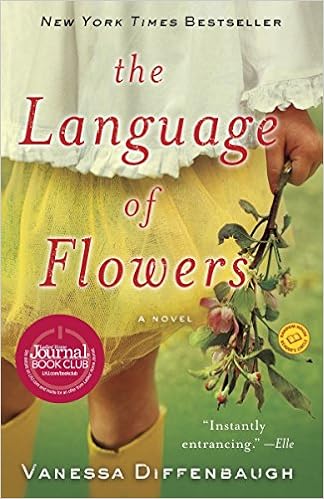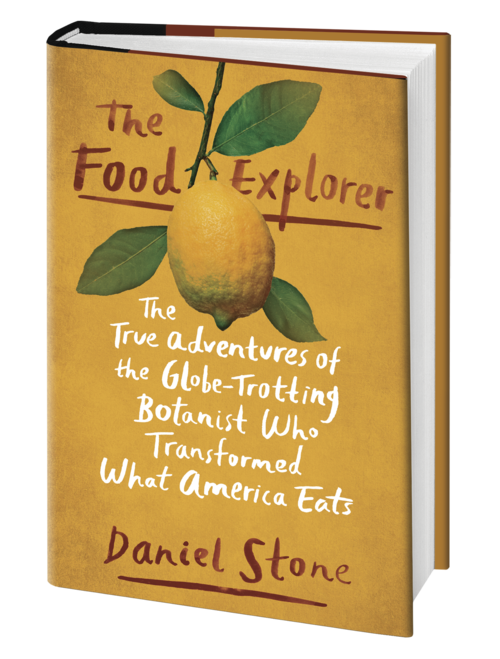
What happens when a botanist gets her hand on a book about the meaning of flowers? She gets one of her quickest reads in years.
The Book: The Language of Flowers by Vanessa Diffenbaugh is a novel about young Victoria, a girl who is in the foster care system in the San Francisco Bay Area. The story follows her life from her adolescent years as a foster child, through her emancipation from foster care on to her young adult years. Victoria was given up as an infant, and she then bounced around the foster care system for 18 years. The descriptions of her experiences in various potential adoption situations, followed by her life as an adolescent and teen in group homes vividly portrays what many children in the foster care system experience.
The story may resonate with me because it is set in San Francisco and in the North Coast viticultural area of California. Victoria lives most of her childhood within the San Francisco Bay Area. Her life really changes when a vineyard owner becomes her guardian. The vineyard owner, Elizabeth, farms her own land and welcomes young Victoria into her home and teaches her all about grape growing. Elizabeth also has an extensive lexicon of flowers, knowing the meaning of each flower in the garden. Elizabeth finds an apt pupil in Victoria, and they form their own language of flowers during their evolving relationship.
Victoria is a strong willed, and sometimes violent child who has a hard time finding a family that will become her adopted family. She is taken in by Elizabeth, and almost becomes Elizabeth's daughter, but it doesn't happen. You see the relationship build, but also how it is marred during their time together.
Once Victoria turns 18 she is no longer a ward of the state, and she has to find her own way in the world. Homeless in a park, she finds a job at a flower shop after she wows the owner with the exquisite and meaningful bouquets she presents to her. Victoria is a natural florist, and can find the perfect flowers for every customer, for every situation and for every need. Quickly she is indispensable at the flower shop and she is starting to establish herself as an adult in San Francisco.
Victoria does fall in love with someone who understands her affection for flowers. They form a solid relationship. All relationships are fraught with problems and misunderstandings, this one is no different. The relationship is severed, suddenly, by Victoria, and you wonder how she is going to keep herself together.
Reconciliation does happen, on Victoria's terms, and her future happiness is probable. Reading this story, I really appreciate that Vanessa Diffenbaugh does not paint a portrait of innocence and victimhood in her descriptions of Victoria. She shows Victoria's faults as well as her talents.
The Botany: This book talks about flowers and their meanings. In Victorian times (it should be noted that our main character is Victoria) flowers and their secret meanings were used to communicate messages between people. Flowers continue to communicate messages now. Here are the flowers and their messages that I'm interpreting this this summer:
Fennel = Strength. Fennel is growing with abandon in my garden this year. I spied a flock of goldfinches pecking out fennel seed yesterday, and fennel is a great habitat for Yellow Swallowtail Butterfly caterpillars.
Grapevine = Abundance. With the grapevines being laden with fruit right now, you can see the abundance around you.
Oregano = Joy. I have planted oregano in every incarnation of it this spring. Variegated, Greek, Italian. I hope it brings a lot of joy to my household.
Sage = Good Health and a Long Life. My sages this year have been so drought tolerant and are thriving everywhere I have them in the garden. I hope it signals good health and a long life for my family during the pandemic and afterwards.
Wheat = Prosperity. At the beginning of the pandemic my straw bale sprouted and a small crop of wheat was soon flourishing by my compost pile.
Scarlet Pimpernel = Change. Every spring this flower finds itself in my garden, along my walkways and places where I least expect it. I have a new patch of it coming up in a recently planted flowerbed. I hope this brings good change. We could all use it.
Definitely a well written book. The Language of Flowers was a fun discovery.
